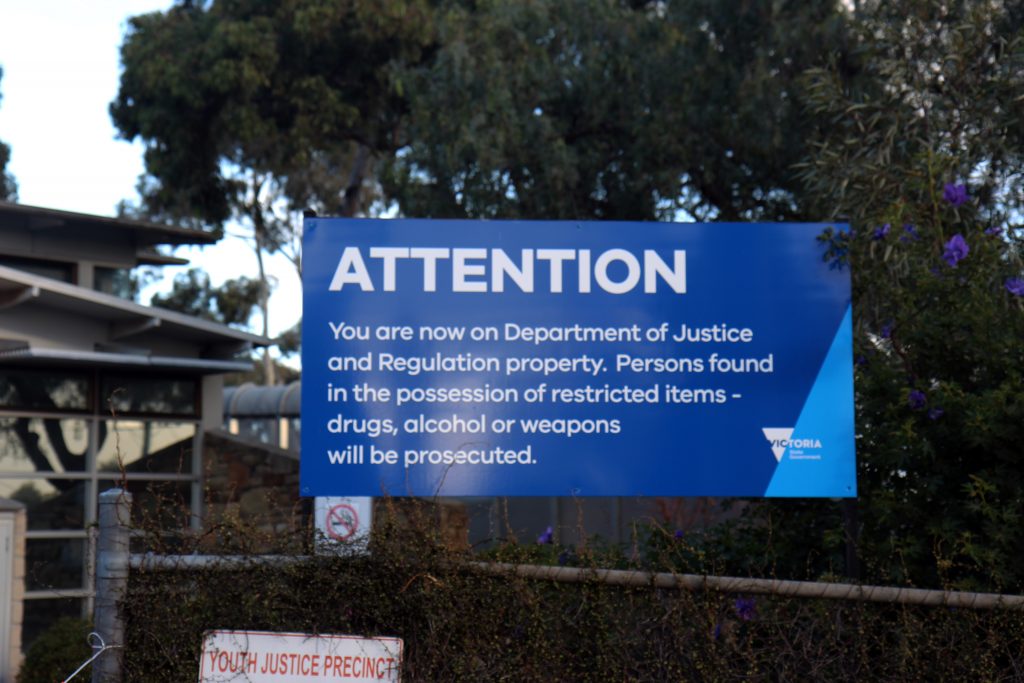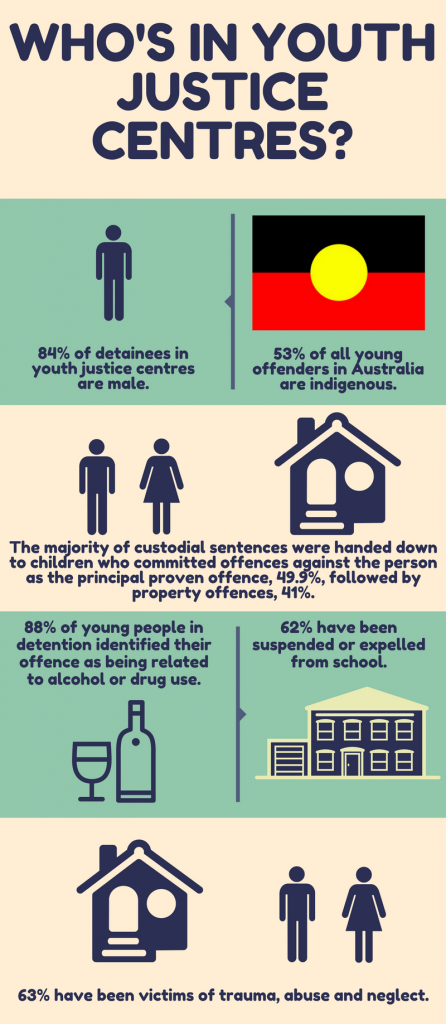
Outside of Parkville Youth Detention Centre. By Alice Rennison
Youth justice centres are used to detain severe offenders aged 18 and below (sometimes older if they offended before they turned 18). It is considered the most severe punishment for young offenders. And Victoria currently has 193 young people in youth justice centres. But who exactly are the young people in these centres?
Statistics, from the Youth Parole Boards 2015-16 report, show that 63% of kids in a youth justice centre have experienced abuse, trauma and neglect.
Victoria Legal Aid’s Youth Crime Program Manager Anoushka Jeronimus said that we should be looking at the path at how the young person ended up in youth detention.
‘We should be asking is what resources does this young person need? It might be that what young person A needs is very different to what person B needs.’
‘If they (kids) are in custody, we want to be making sure that we are using that time with them as best we can.’
The Youth Parole Board’s report found that 30% of young people in the centre presented with mental health issues; 11% were registered with disability services; 18% had a history of self harm or suicide ideation; and 24% presented with issues concerning their intellectual functioning.

Youth Justice Centres infographic (sources: Australian Bureau of Statistics, Department of Human Services and the Sentencing Advisory Council). By Alice Rennison
The Youth Parole Boards also noted that the younger the offender, the more likely they are to have had or currently have a child protection order. 45% of people in the centres have had a child protection order. 19% have a current child protection order.
Last year the Youth Parole Board cancelled 34 parole orders due to people reoffending.
Jeronimus said in her experience ‘a lot of my clients who have been unable to remain offence free are those who were involved with child protection very early; they had mental health issues; they had drug and alcohol issues from a very young age; and negative peer associations’.
‘They weren’t able to make the decisions they needed to be able to break that cycle of offending.’
‘They’ve got less skills and resources to be able to say no. And that’s not because they are somehow different or bad children, it’s just that their life circumstances, more often then not, have brought them to that point.’





